Welcome to the 2020 Conservation Optimism Film Festival! This year we have decided to integrate a virtual exhibition as part of the event. We are featuring a diversity of illustrators, drawers and photographers and hope you enjoy their amazing artworks.
Rachel Hudson – Wildlife Illustrator
Rachel Hudson is a wildlife illustrator, working from her home studio in Hampshire, UK. She has a background in the anthropology of art and nature conservation. She works with many of the leading wildlife organisations and publishers in the UK, including BBC Wildlife Magazine, Butterfly Conservation, The Wildlife Trusts, National Trust and People’s Trust for Endangered Species. Check her website here for more illustrations.
100 Lemurs
Rachel is currently collaborating with Duke Lemur Center – a world leader in the care, study and conservation of lemurs to highlight their incredible diversity and why they need our protection.
Coupled with lots of facts and information from DLC, Rachel is illustrating one lemur a day for 100 days on Instagram @rhudsonillustration. She is also working with NGOS, Planet Madagascar and Lemur Love, to help promote their conservation and education programmes in Madagascar.
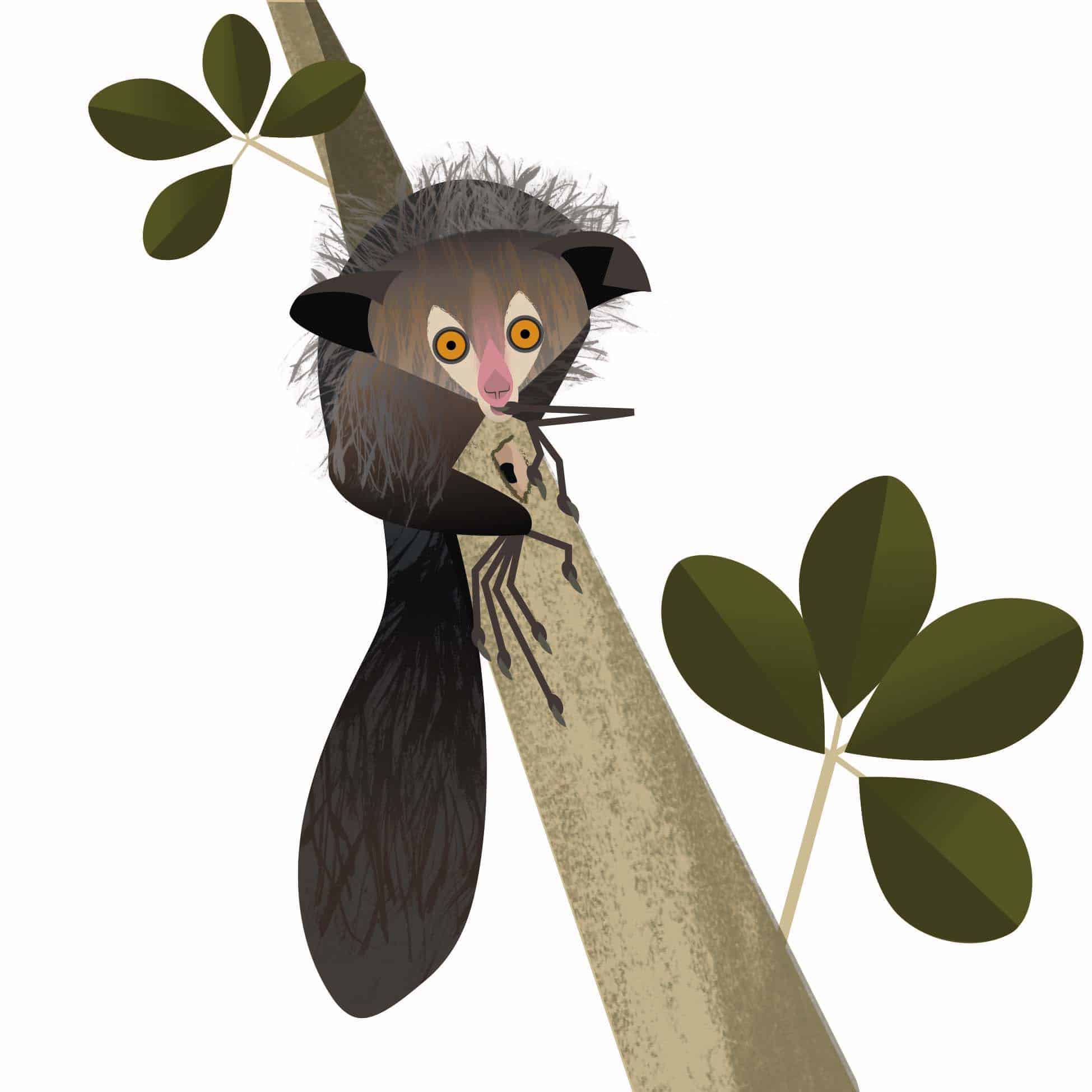
Aye-aye

Female mongoose lemur
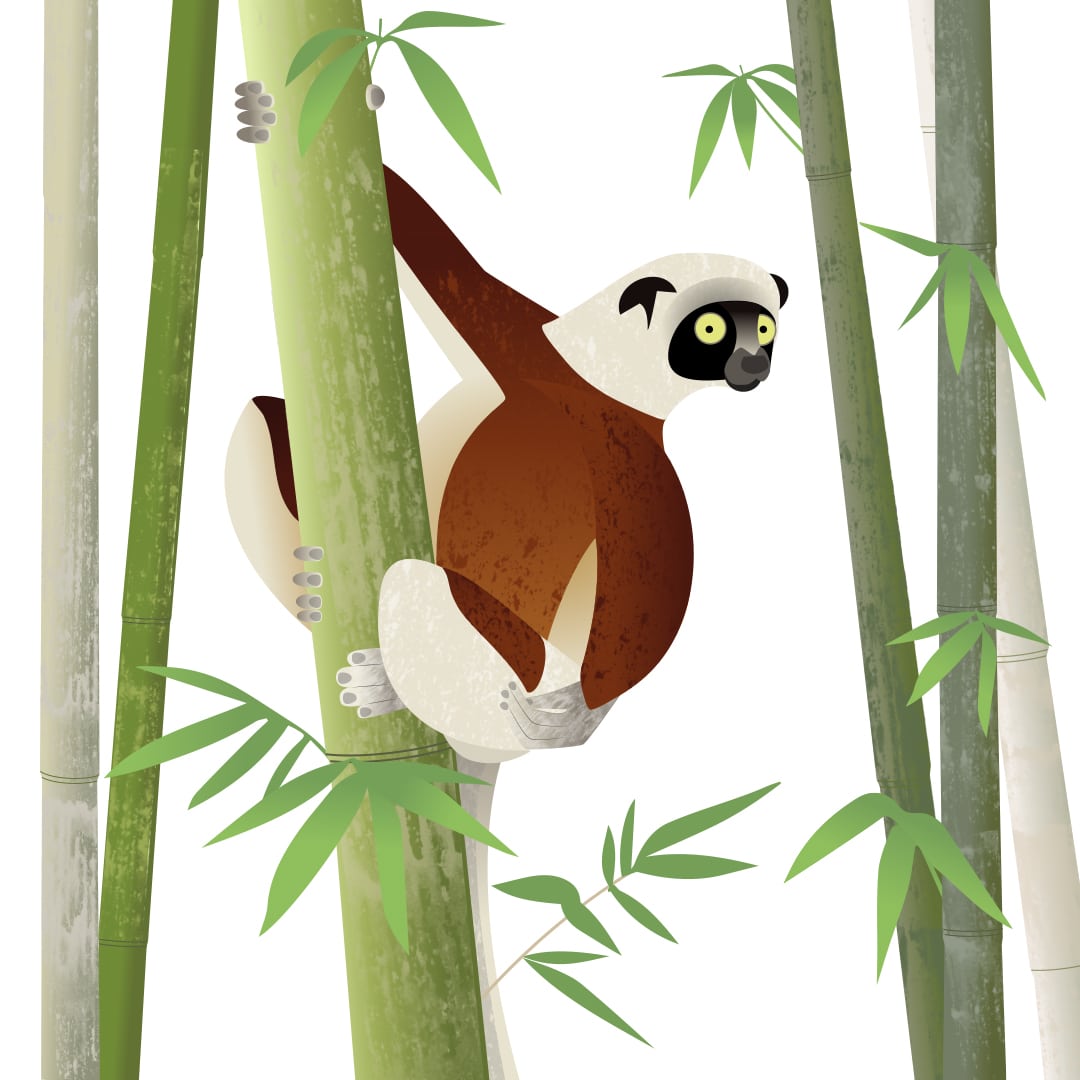
Coquerel’s sifaka
White-tailed eagle
Close to her home, a reintroduction programme of white-tailed eagles is taking place on the Isle of Wight. Rachel was asked to illustrate the species by Hampshire Ornithological Society, ahead of a talk about the reintroductions by the Roy Dennis Wildlife Foundation.
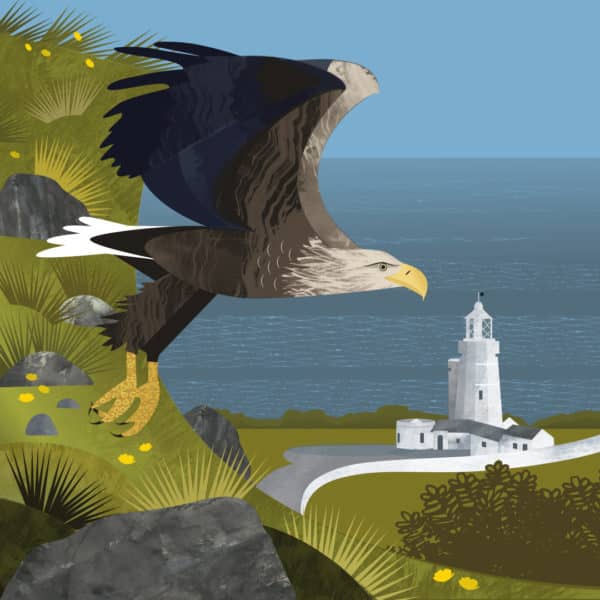
Northern rockhopper penguins
Rachel worked with RSPB and BirdLife International on a Threats to Penguins campaign, as part of their Global Seabirds Programme. Overfishing of prey, bycatch in gill nets, climate change, invasive species, oil spills and habitat loss and degradation are all making life difficult for penguins.
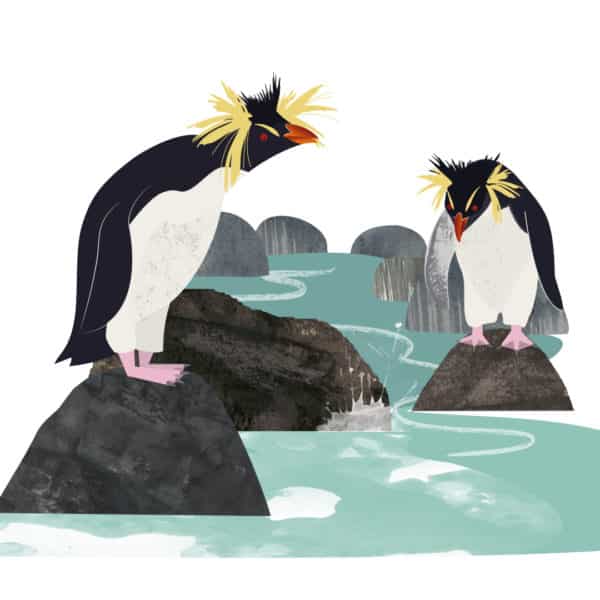
100 Endangered Species
Last year Rachel worked closely with the People’s Trust for Endangered Species to raise awareness of threatened species in the UK and worldwide, from newts to crocodiles, bumblebees to bears.
She is now a corporate partner of the Trust and a percentage of proceeds of her endangered species stationery range is donated to the charity. 100 Endangered Species will be published as a children’s book in spring 2021, with a foreword by BBC broadcaster and nature writer, Brett Westwood.
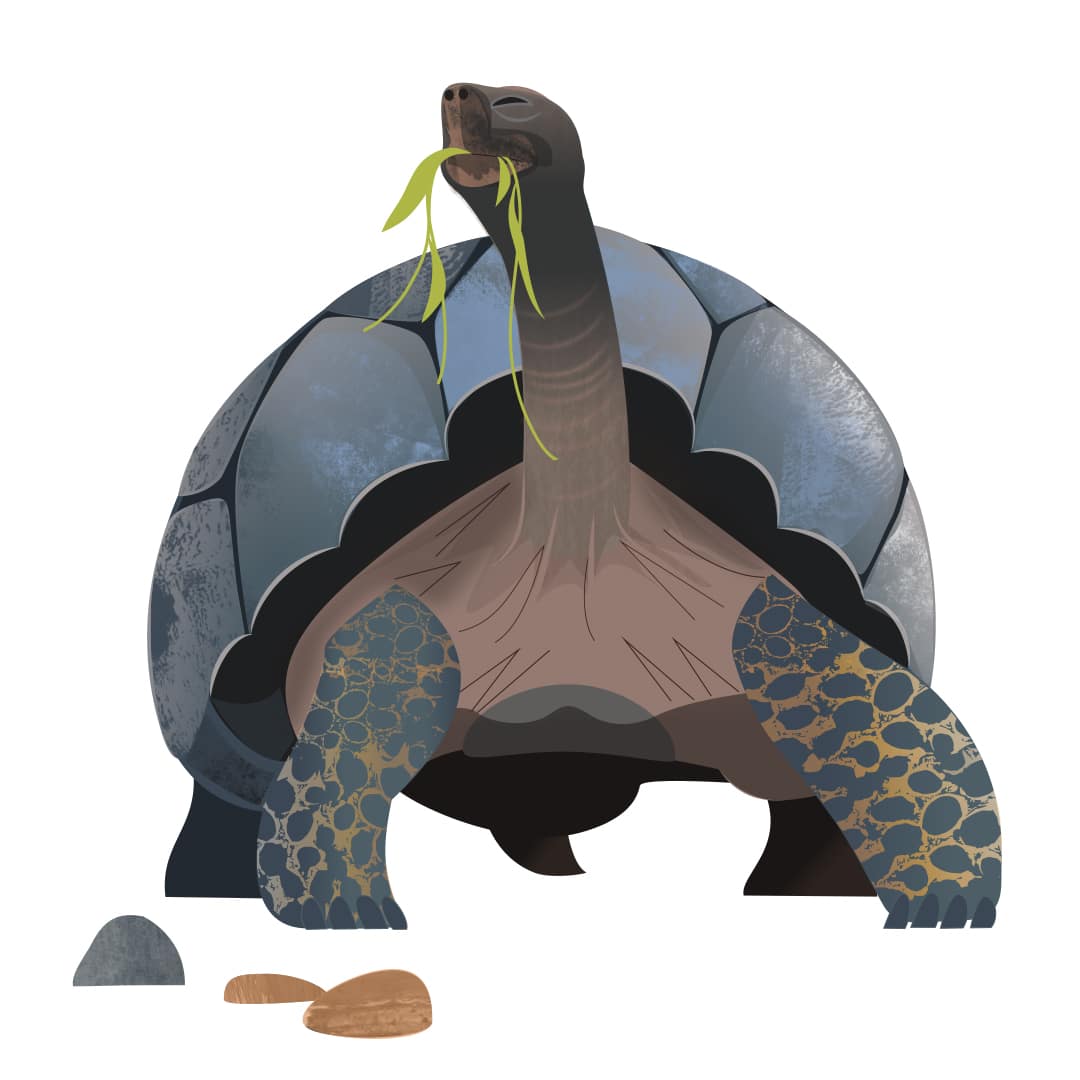
Giant Galapagos tortoise
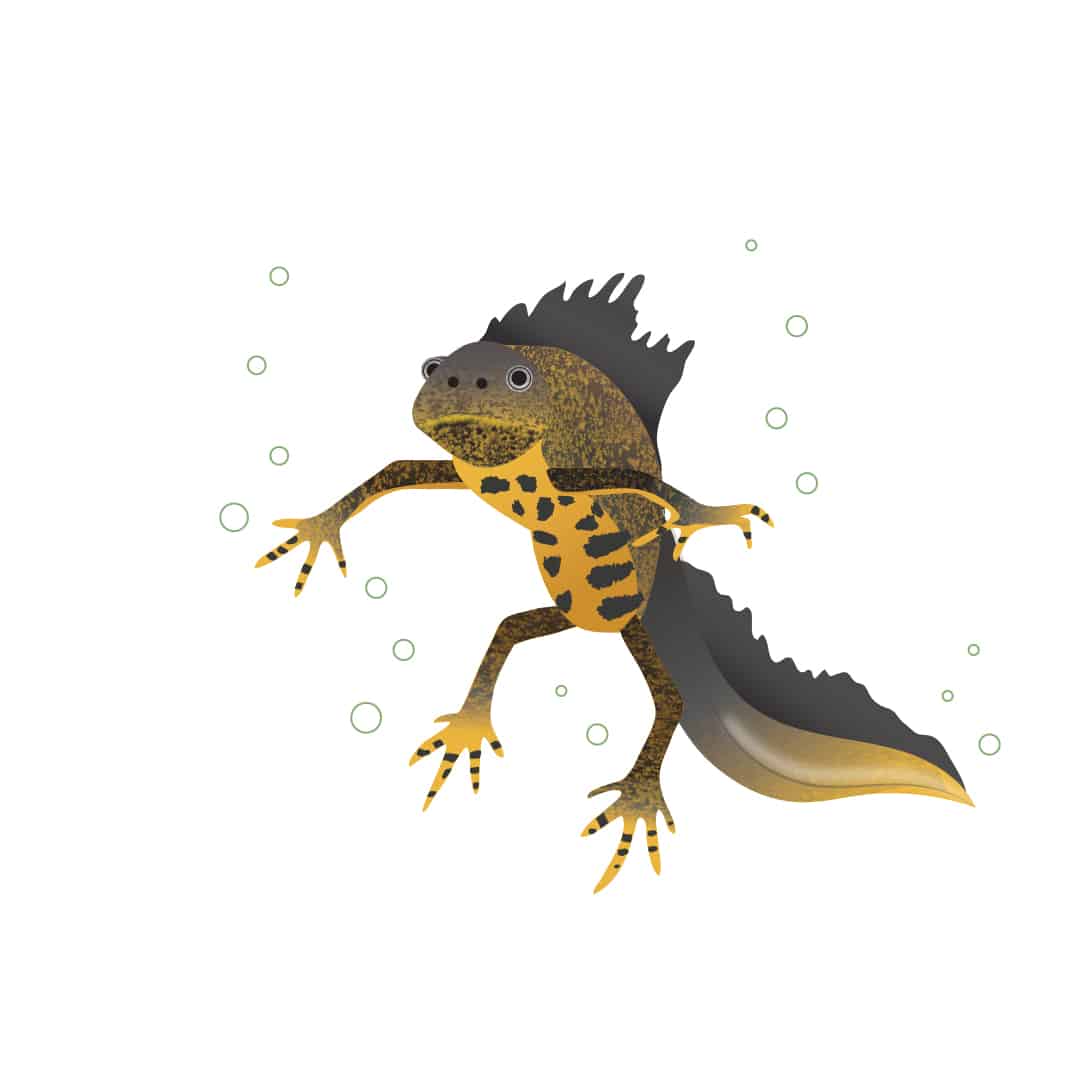
Great crested newt
Wildlife Interpretation/Nature Trails
Rachel also illustrates wildlife interpretation boards and nature trails for reserves, country parks and visitor centres, to help people to connect with the wildlife on their doorstep. This woodland bird panel has just been installed by Christchurch Ornithological Group in a bird hide they have spent three years fundraising for and building.

Dr Cécile Girardin – Ecosystems Scientist / Biodiversity & Climate Change / Artist
Bonjour! @cecilegirardin here. I am a biodiversity expert at the University of Oxford and a science illustrator. As Science Lead of the Oxford Biodiversity Network, I get to dive into the latest cutting-edge research on our natural world, ecosystems, and biodiversity. I would like to take this opportunity to share some of our stories. We have many, many more exciting stories to tell.
The Oxford Biodiversity Network is the network of researchers and practitioners in and around the University working on biodiversity. The network includes academics, senior researchers, students, and staff spanning multiple departments (most notably Zoology, Plant Sciences, Earth Sciences, and Geography), the Gardens, Libraries, and Museums, and Wytham Woods Research Facility. It extends over more than 20 Departments and Institutes, supporting almost 200 members. The Biodiversity Network team seeks to highlight and integrate the range of biodiversity-related research and activities going on in Oxford, and to work closely with other ONE networks to contribute to the sustainability of the natural world.
The Network is directed by Prof. Yadvinder Malhi, and managed by Dr. Cécile Girardin – science lead, Carlyn Samuel – events coordinator, and Emily Read – network coordinator. The Oxford Networks for the Environment (ONE) mobilise the University’s expertise in science, technology, business and society in relation to the environment. They enable Oxford to find solutions to the complex, converging challenges of energy, water, and food security, climate change, and threats to biodiversity.
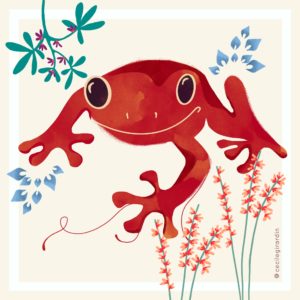
The Golden Toad
The el dorado frog was last seen by humans in 1989. The first terrestrial extinction associated with climate change. We have strong reasons to believe it is still out there, nested in the deepest darkest corners of the misty forests of Monteverde. Waiting for the storm to pass. This artwork was inspired by the Conservation Optimism Film Festival 2020 and the shortlisted film The Search for the Golden Toad.
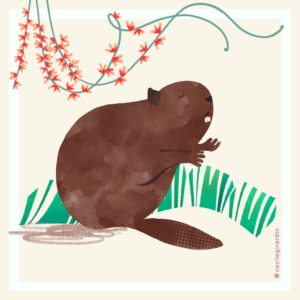
The wonderful world of beavers
Annie Welden is taking us to the wonderful world of beavers, the remarkable ecosystems engineers that work with humans to increase ecosystem biodiversity. Ever heard the phrase, ‘busy as a beaver?’ These large rodents found in North America and Eurasia are busy literally building biodiversity. By constructing their dams out of the materials around them, from logs to old shopping carts, they slow the flow of water, creating wetland habitat for other many other forms of life. Beavers and their dams make worlds for other species from aquatic plants to otters to, some may even say, humans.
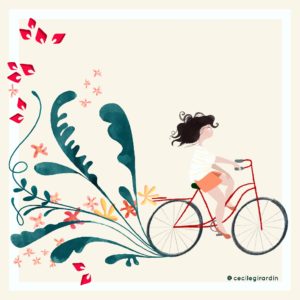
Conservation Mitigation Hierarchy
Did you know that you can use the #4steps4theearth framework to help you frame and account for the impact you have on nature? Researchers from the Interdisciplinary Centre for Conservation Science have developed a new framework to help us frame and account for all impacts humans have on nature – one that can be used by everyone: the #4steps4theearth.

The Sabah Biodiversity Experiment:
One of the largest ecosystem restoration experiment in the world, the experiment has been going on for almost half a century. It has planted 100,000 trees over more than 5 square kilometres of a remote area of logged forest to investigate how it can be best restored. The project, located in Northern Borneo, Malaysia, studies 25 species in detail including the world’s tallest tropical tree species and other endangered relatives. The new collaboration with remote sensing experts has used satellite imagery to assess a range of different methods of forest restoration. Find out more here eci.ox.ac.uk.
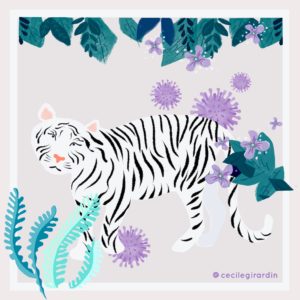
Illegal Wildlife Trade
Earlier this month, EM Mrema, executive secretary of the UN Convention on Biological Diversity, called for a global ban on wildlife markets. One such market in Wuhan, China, is believed to be the starting point of the coronavirus outbreak. But there is a catch: a complete ban on wildlife trade can have unintended consequences. Millions of people depend on wild animals to survive. Unless we provide sustainable alternatives, a ban on wildlife trade can result in an explosion of an uncontrollable black market. Most importantly, we need to take this warning from Nature seriously and learn to co-exist with wildlife in a way that benefits nature and people.
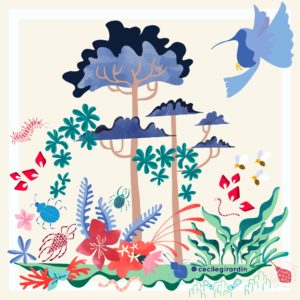
Ecosystems and Climate Change
Ecosystems are a big part of the solution to climate change: Agriculture, deforestation, and land degradation contribute to 24% of global greenhouse gas emissions. Restoring our natural world helps mitigate climate change by removing carbon dioxide from the atmosphere. Protecting, restoring, and better management of ecosystems helps avoid emissions and sequestering carbon. They also help us adapt to climate change by regulating local climate, water quality, and pests, providing food security, economic value (wood production and non-wood products), beauty, and health benefits.
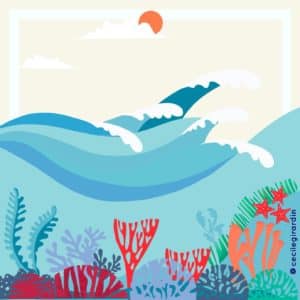
Nature-based solutions
Nature-based solutions (NbS) are ways of tackling societal challenges by working with nature. They typically involve the restoration of natural ecosystems, such as forests, peatlands, marshes, grasslands and reefs. But they can also comprise more unusual practices, such as the creation of floating agricultural beds in Bangladesh – an age-old traditional practice which is now spreading throughout the country.
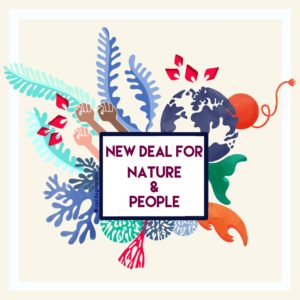
New deal for Nature and people
Humanity is facing a climate, biodiversity, and social crisis: keeping global warming below dangerous thresholds & reversing the global decline in biodiversity are the two greatest environmental challenges of our century. We all depend on healthy ecosystems for food, energy, water, and biodiversity.
Want to see more artworks from Cécile? Check out her Instagram page!
Tim Kuiper – PhD Student and Photographer
Tim is a PhD student at the Interdisciplinary Centre for Conservation Science at Oxford University. He loves statistics and is getting to grips with the social sciences, as he researches ranger-based monitoring of elephant poaching in his home country of Zimbabwe. He loves capturing beauty in nature and wildlife through his photography hobby and hopes you enjoy his shots!
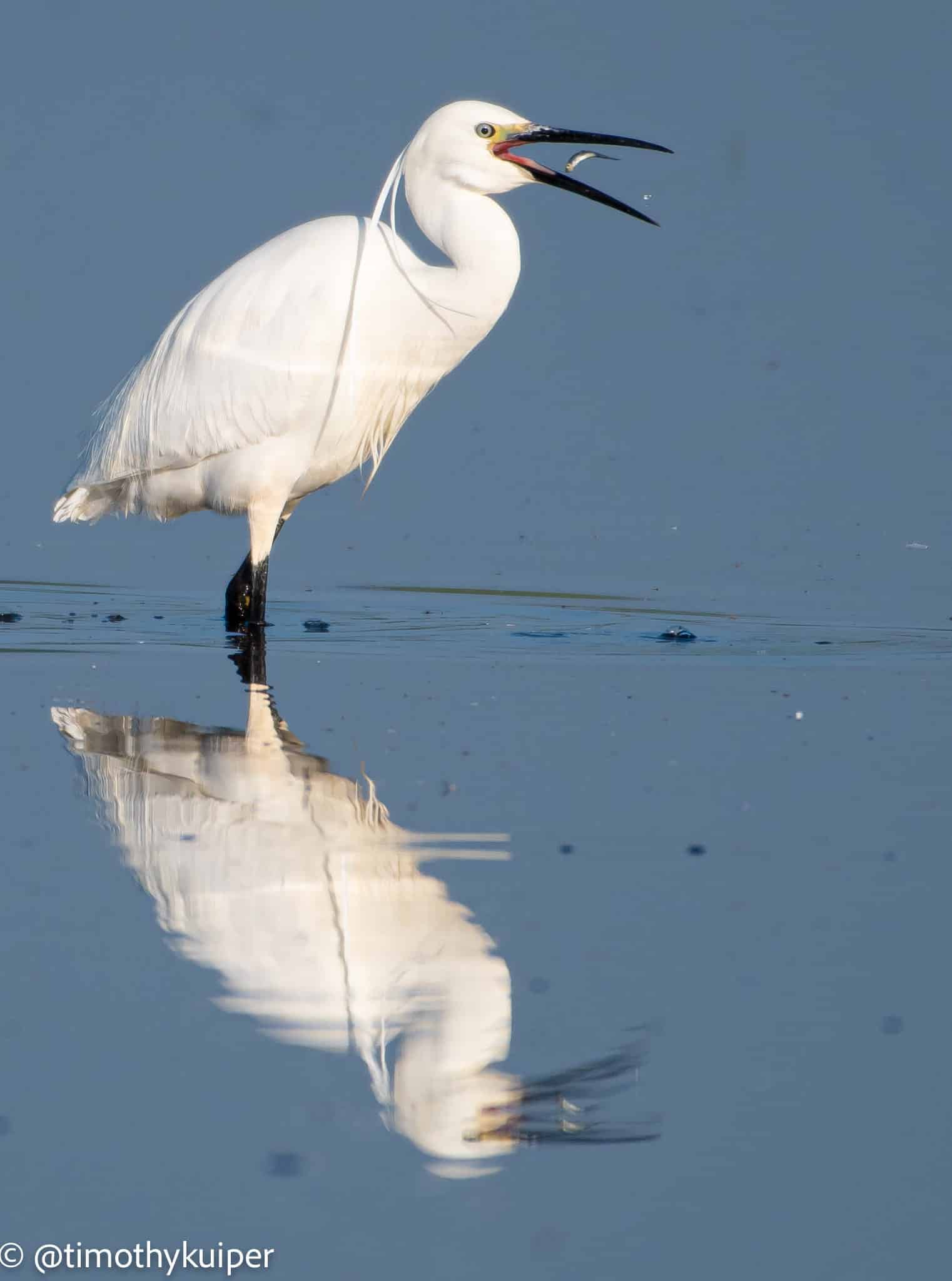
Nature still works – this image makes me optimistic because it shows natural cycles, life and death, operating just fine in the middle of a city.

There is beauty even in the small things. This dandelion reminds me that sometimes joy and reminders of hope are right in front of us.
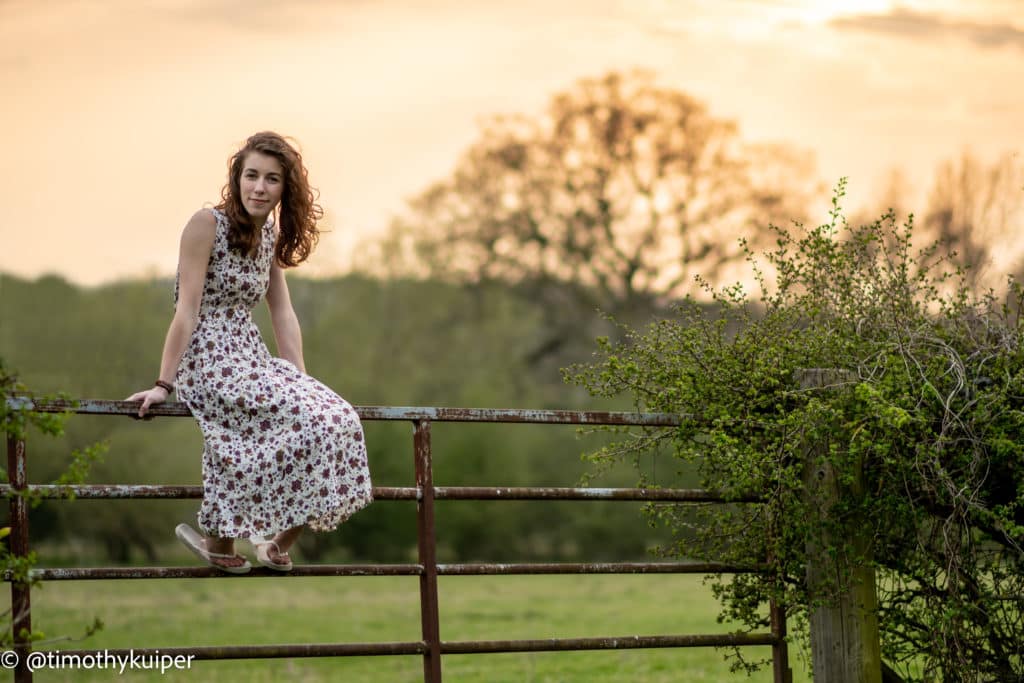
Here’s one of my beautiful wife – my favourite animal in the world (sorry that sounds weird). This photo makes me optimistic because Danica reminds me to go slow and be simple and laugh at things like Disney movies.
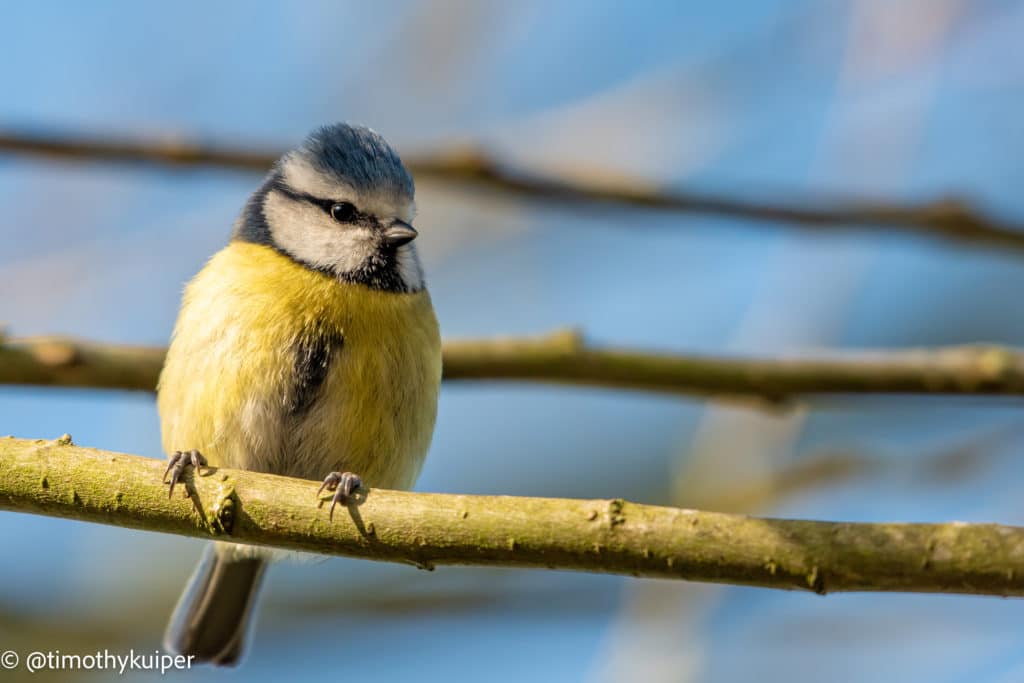
How cute and colourful is this little guy? These blue tits make me optimistic because they thrive and thrive and multiply and just do their thing anywhere in the UK, even in the middle of a city. I recently saw a pair mating. Amen!

Seeing these horses roam freely in Port Meadow, Oxford, and interact freely (and mostly calmly) with the public makes me smile. It speaks of trust and community.
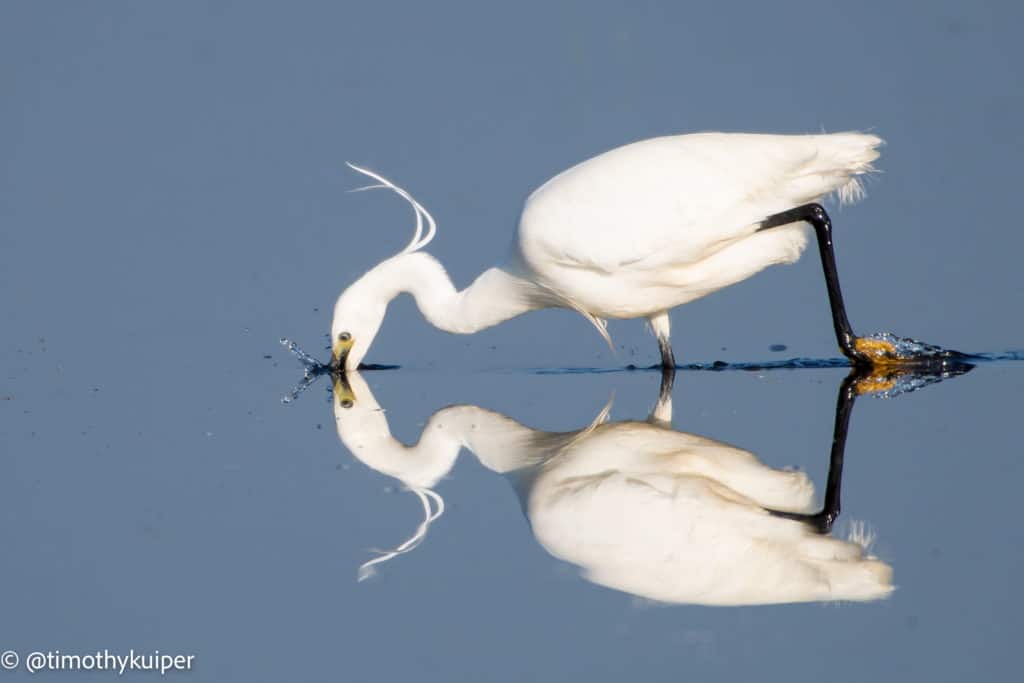
How cool is this egret? Lighting fast and so elegant! This makes me wonder at the beauty of evolution, and the God I believe is behind it all.
Prints that Protect – Shining a light on extinction
Created by brothers and design duo Ed & James Harrison, Under the Skin is a creative venture to raise awareness of some of the world’s most endangered and vulnerable animals. By using the concept of interactive printmaking, these extremely limited edition prints are a hand-crafted celebration of species from across the globe with a powerful underlying message. Under UV light the phosphorescent skeleton is exposed; all that remains when a species falls into the darkness of extinction.
Their mission is to raise awareness of extinction in fresh and engaging ways, whilst celebrating the biodiversity of species. They donate 20% of each print sale to a charity working to protect the respective species. Through their printmaking, they are raising money and promoting the work of grassroots charities who are focused on supporting some of the most vulnerable animals across the globe. These include Sea Shepherd, RSPB, the Bornean Sun Bear Conservation Centre, Bornean Orangutan Survival, Birdlife International, Global Wildlife Conservation and the David Shepherd Wildlife Foundation, among numerous others.
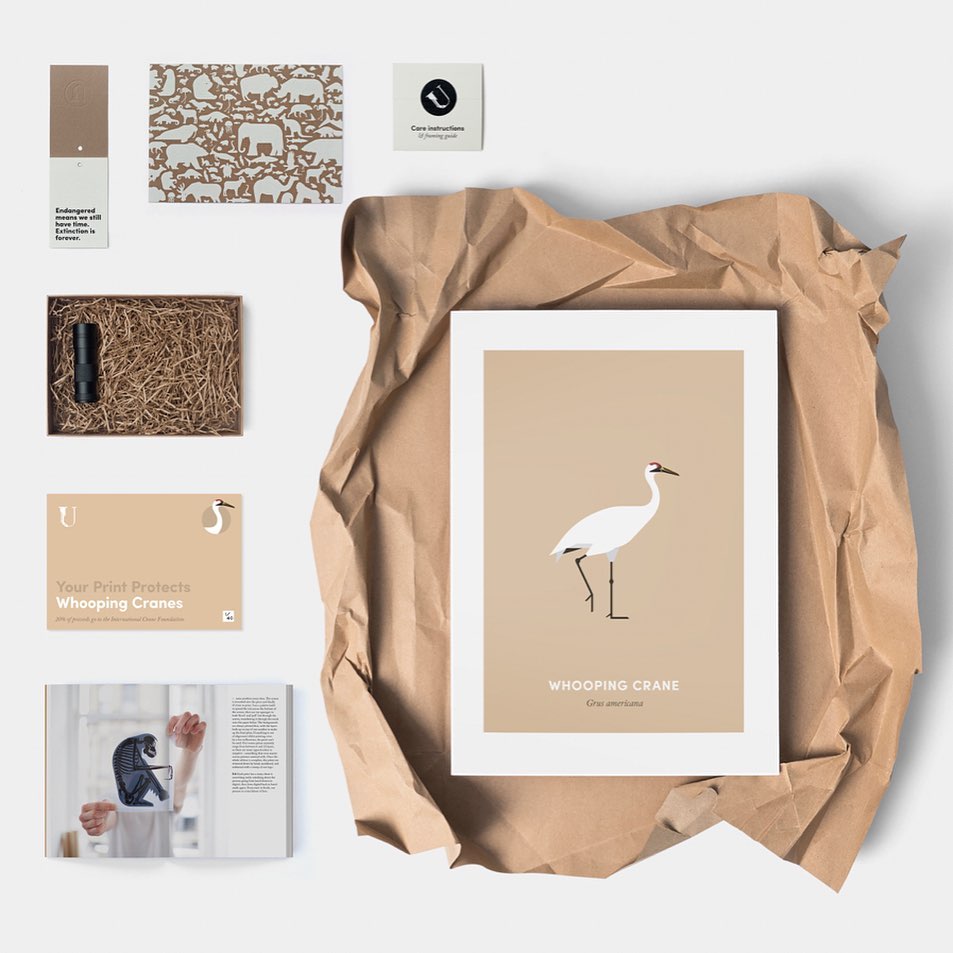
Low population numbers, coupled with the loss of habitat and hunting pressures, nearly caused the Whooping Crane’s extinction in the early 1900s. By 1941, there were only 21 Whooping Cranes left on earth. Of these, six died in a Louisiana hurricane, leaving just 15 whooping cranes struggling to preserve the species. Today, nearly 600 Whooping Cranes live in the wild! The International Crane Foundation is bringing the Whooping Crane back from the brink of extinction.

FOUND! This charming little snaggle-toothed ‘mouse-deer’, called a Silver-backed Chevrotain, has been lost to science since 1990. Until now!
In November 2019 Global Wildlife Conservation rediscovered a wildlife species called the Silver-backed Chevrotain – a species the size of a rabbit, has a silver sheen, and has been hanging on in a region of Vietnam that is sadly ravaged by poaching snares. Scientists know almost nothing about the species’ general ecology or conservation status, making it one of the highest mammal conservation priorities in the Greater Annamites.
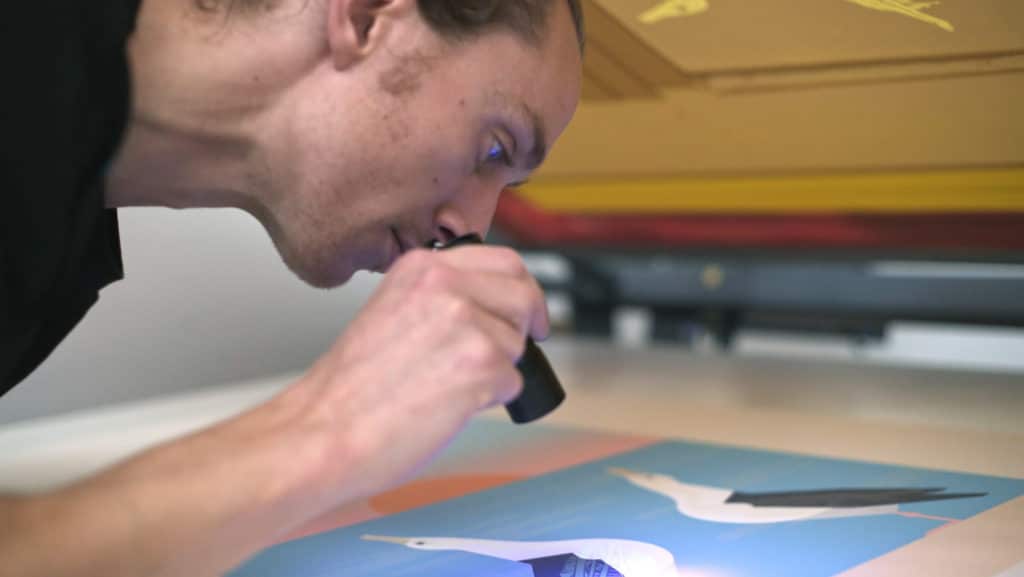
We partnered up with The Albatross Task Force – an international team of seabird by-catch mitigation experts set-up by the RSPB and BirdLife International, who are on a mission to make trawl and longline fisheries safer for seabirds across the world. They are working with fishing crews rather than against them, showing the crew innovative yet straightforward ways to stop killing seabirds. South Africa has been a shining example of how things can drastically change for the better, with an astounding 99% reduction in albatross deaths in the hake trawl fishery since the team started there in 2006.

Remaining numbers are still unknown for the critically endangered Western Gorilla, but it is estimated that populations have plummeted by 60% in the past 2-3 decades. But there is still hope. With the dedication and passion of charities who are working day-in-day-out to protect this species from extinction, we are seeing a decrease in the number of poachers and an increase in the number of gorilla guardians and critical habitat. This is giving this majestic species the best opportunity to survive and thrive. This print supports The Gorilla Organization, a dedicated charity that works at the very forefront of gorilla conservation.
Amy Fitzmaurice – PhD student and Photographer
The Life of a Conservation Scientist
Being a conservation scientist is not just about studying wildlife, it is about the whole ecosystem and that often includes people that live alongside wildlife. I took this photograph series during my second year of PhD fieldwork conducting the research for the Living with Tigers Project, to show what the daily life of a conservation scientist is like. Each polaroid image represents a day of fieldwork. The Living with Tigers Project is a collaborative project run by Chester Zoo, in partnership with Green Governance Nepal, WildCRU (Wildlife Conservation Research Unit at Oxford University), Department of National Parks and Wildlife Conservation (DNPWC), National Trust for Nature Conservation (NTNC), eight communities, Bardia National Park (BNP) and Chitwan National Park (CNP). The project aims to reduce human-tiger and human-leopard conflict by promoting coexistence and alleviating poverty. To achieve all this, we worked with an amazing group of local people. You can support the Living with Tigers Project if you wish by donating here.
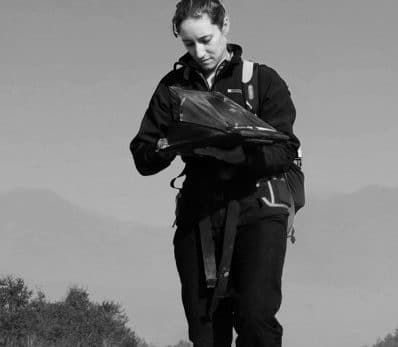
Taken by my Nepali friend Prem during fieldwork.
The wildlife
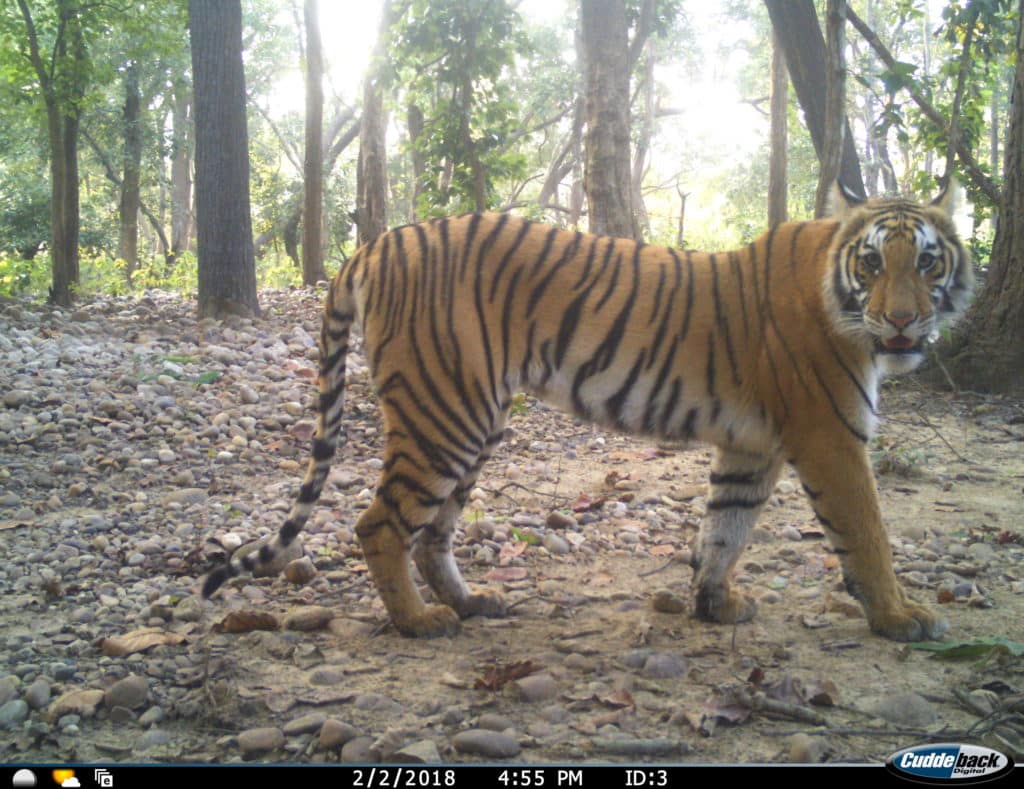
Tiger detected on a camera trap during research.

Leopard detected on a camera trap during fieldwork.
The people

Wildlife tracker, Hari, part of the Bardia team.

Wildlife tracker, Prakash, part of the Chitwan team.
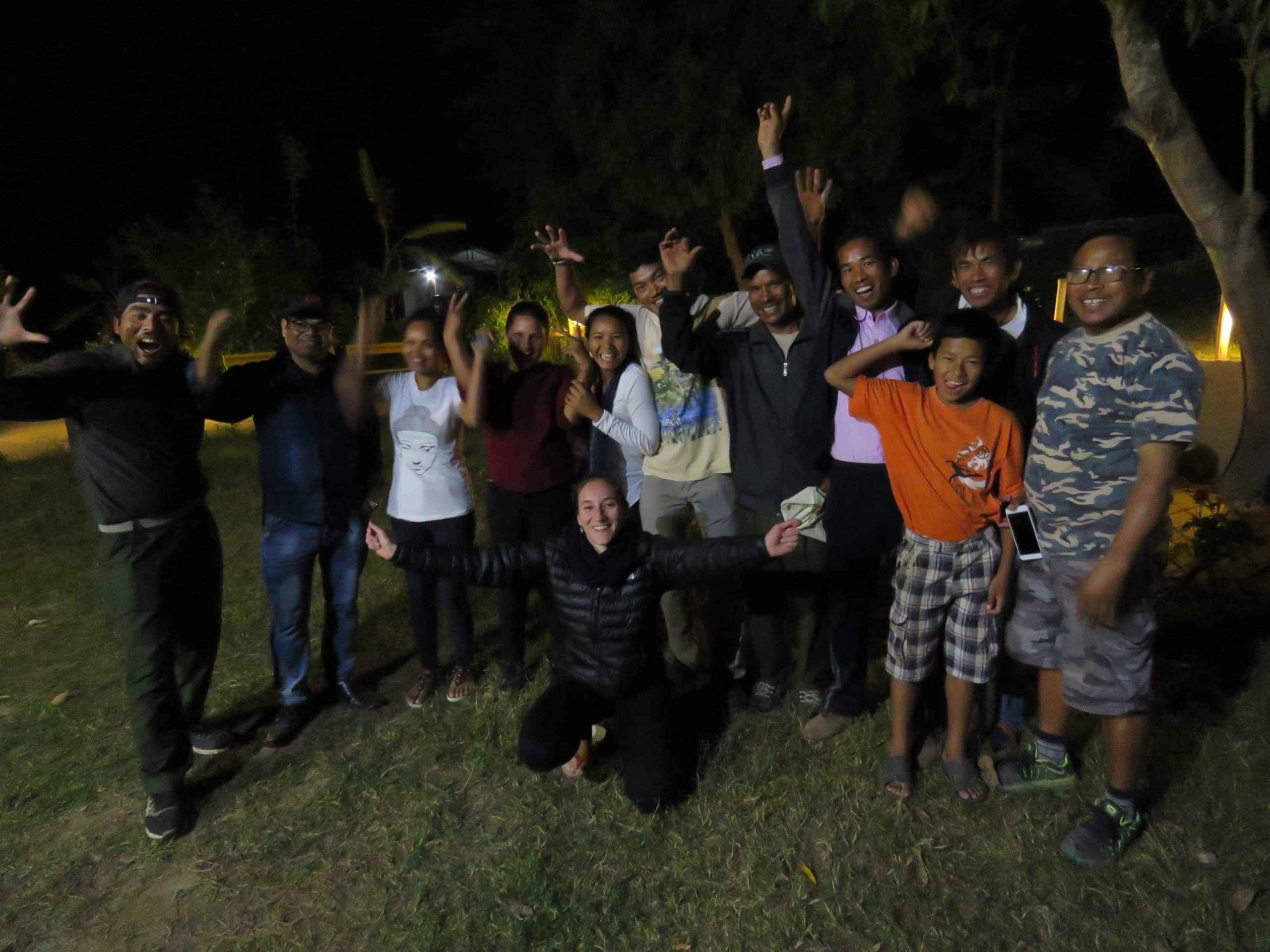
Bardia National Park team on the last fieldwork day.
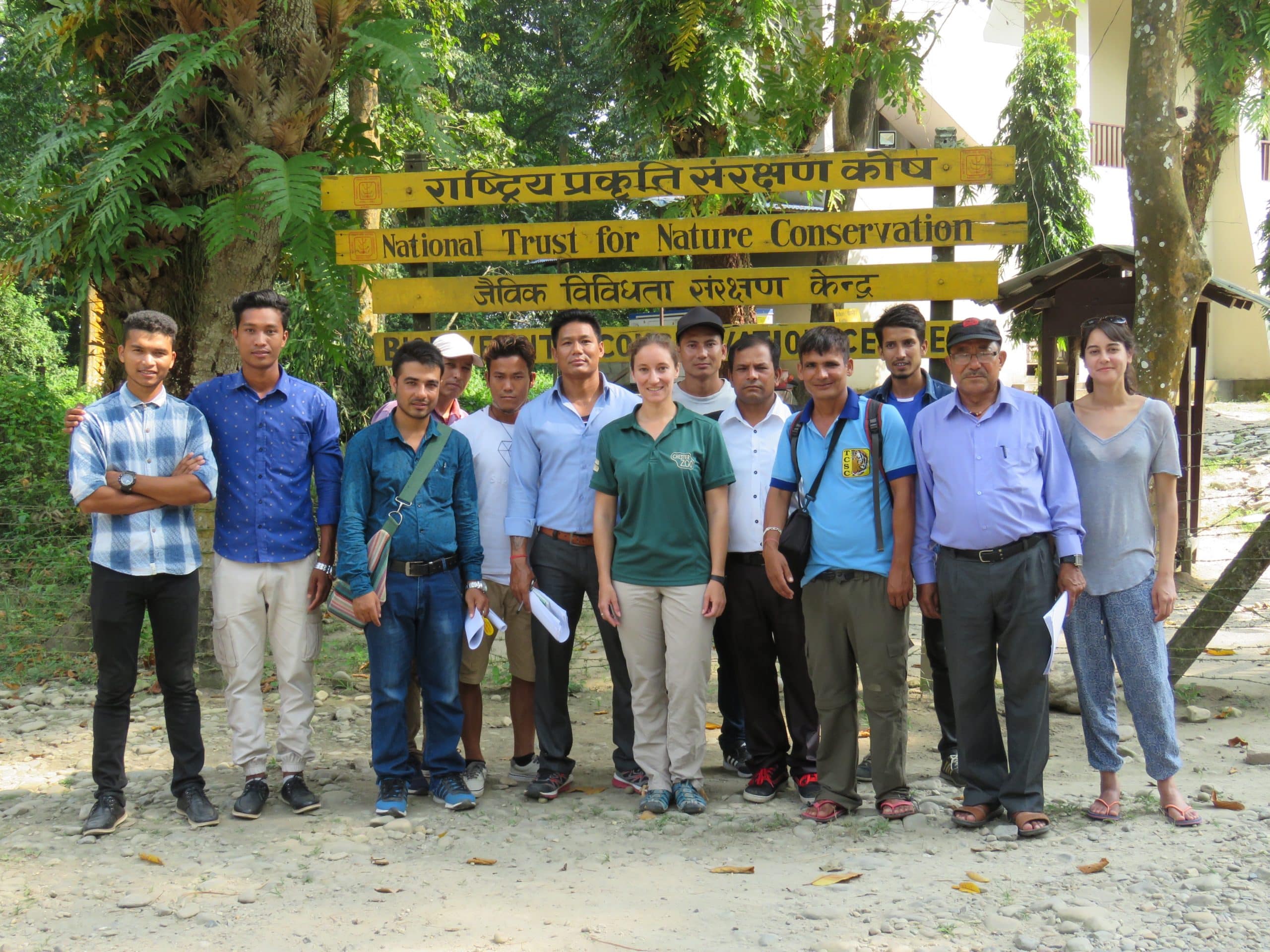
Chitwan National Park team during training.
Amy took a series of polaroid images during her fieldwork so you can get an idea of what the life of a conservationist looks like below!
Alicia Hayden – Student, Illustrator and Photographer
Alicia is a second-year Biological Sciences undergraduate from North Yorkshire who enjoys wildlife art and photography. With her art, she prefers to work in biro to create realistic images of animals displaying natural behaviour. Her illustrations for Conservation Optimism focused on British species which are threatened, but still form part of an optimistic conservation story, leading her to choose the pine marten, various species of bees, and the brown hare.
Pine marten
Pine martens from Scotland have been reintroduced into a secret location in the Forest of Dean, to help bring these magnificent predators back to the South of England. They have also been successfully reintroduced in Wales so makes me very optimistic for the species.
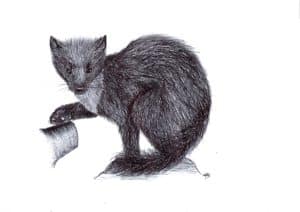
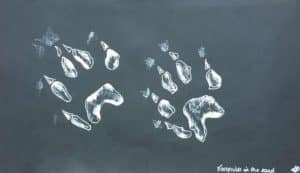
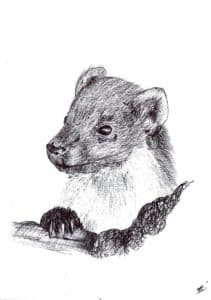
Honeybee
Honeybees are another species we often hear negative news about, due to the use of neonicotinoids and mites which are killing off these important pollinators. However, there is hope: DNA barcoding honey is one of the most recent methods of monitoring honeybee behaviour in an effort to conserve them.

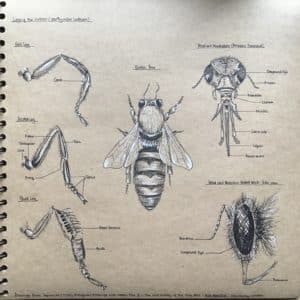

Brown hare
Brown hares have been under threat recently from a myxomatosis-like virus which has devastated their population. Yet often they can be found in quiet places such as graveyards, and in farm fields in the countryside. Although there are still many problems with their conservation, seeing hares around where I live fills me with optimism for their future.
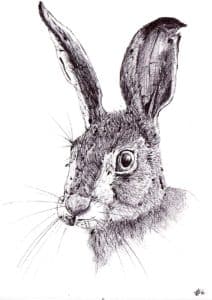
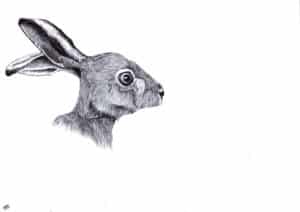
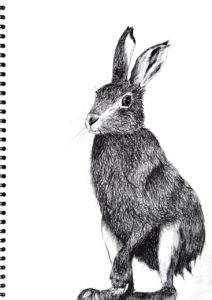
Alicia also took up wildlife photography when she was 10, and specialises in birds and macro photography. She loves trying to find unusual angles and lighting, and capturing action, such as birds in flight. You can see some of her work, both art and photography, here.

A Beak Full! (Puffin)
Puffins are being monitored as part of the RSPB’s Puffarazzi, which asks people to send in photos taken on RSPB seabird colonies around the country. The photos should be of puffins which have fish in their beaks, and they are used to analyse how the puffin’s main food source, which is often Sand Eels, is changing over time, which in turn aids their conservation. This photo was taken on the Isle of May in Scotland, which is a protected RSPB seabird colony, and it shows a puffin with a beak full of Sand Eels.
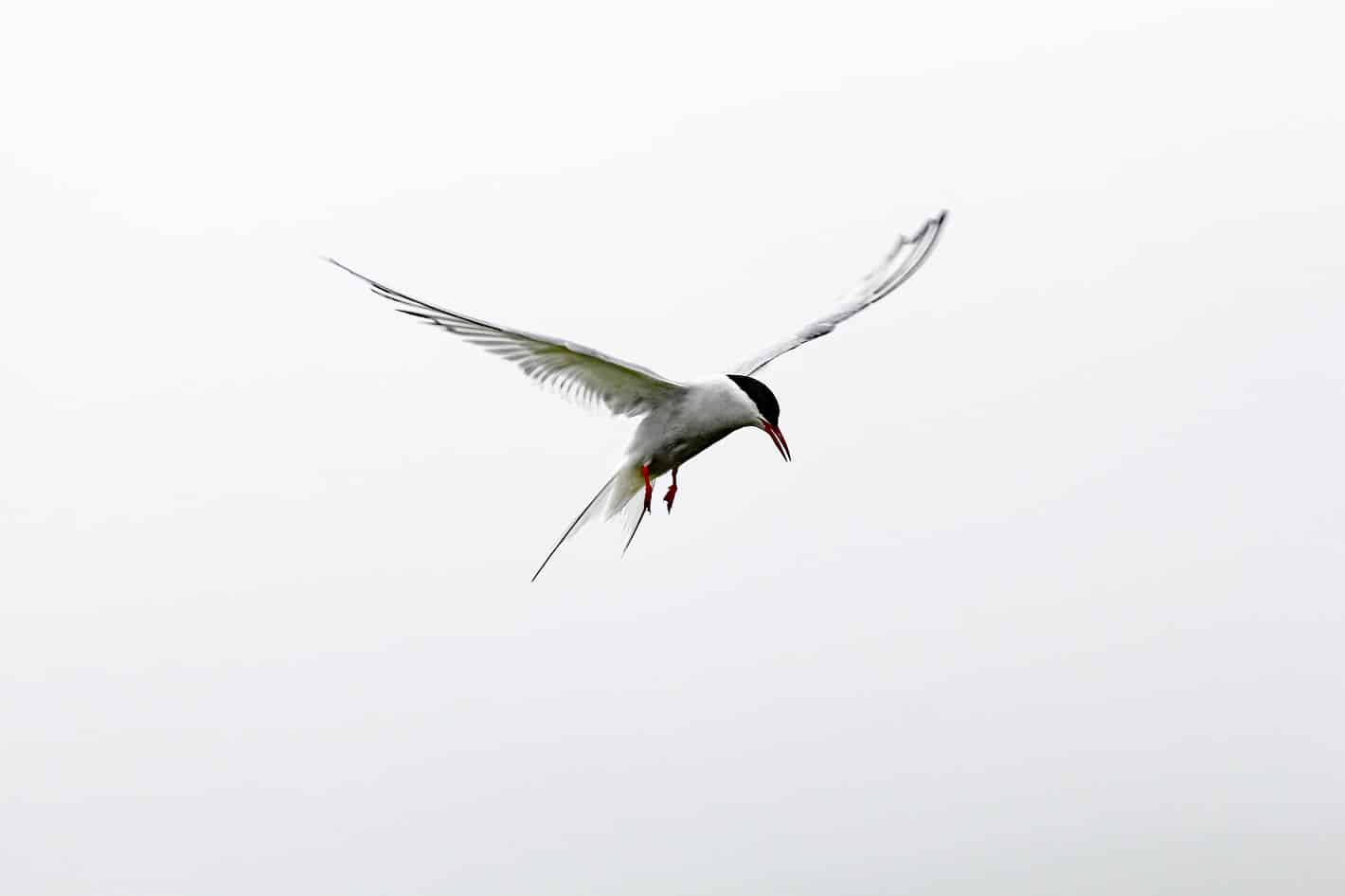
Hovering (Arctic Tern)
Arctic Terns have the longest migration of any bird in the world and are one of my favourite birds. The Isle of May in Scotland, where this photo was taken, has a strong breeding colony of Arctic Terns every summer – and it’s a delight to see them.
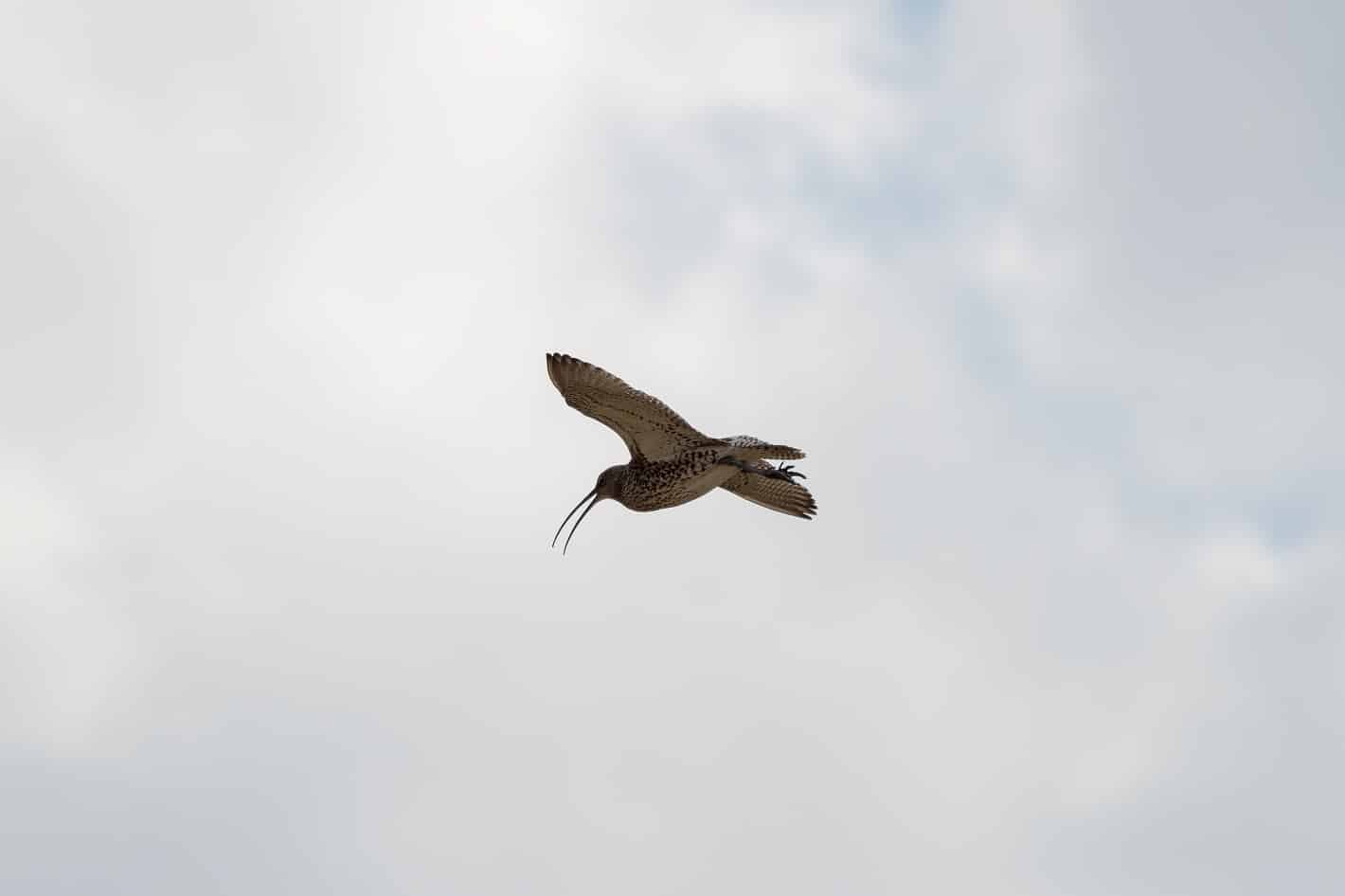
Curlew Cry (Curlew)
Curlews are classified as “Near Threatened” on the IUCN red list, with their population rapidly decreasing. However there is hope for these beautiful birds: the RSPB has a “Curlew Recovery Programme”, which aims to reverse their decline by minimising habitat loss, as well as promoting awareness about these moorland birds. I feel very privileged every time I see and hear them around the moors where I live.
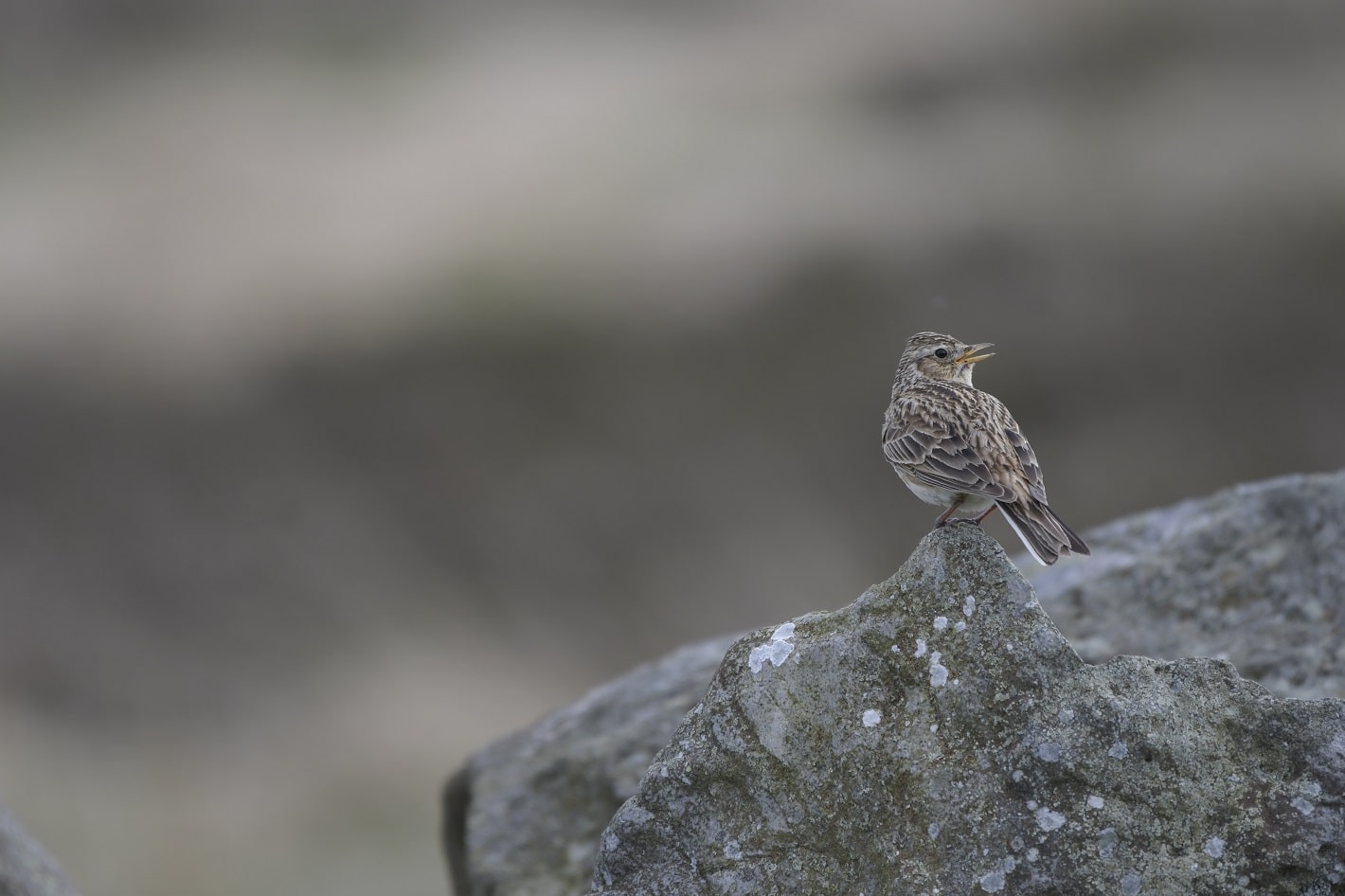
Singing Skylark (Skylark)
Skylarks are a moorland and farmland bird, whose numbers are rapidly plummeting. However, the RSPB has been working with farmers to create “Skylark Plots”, which are undisturbed areas of land left unsown to boost food availability and breeding opportunities for skylarks.
Hollie Booth – PhD Student and Photographer
Hollie Booth is an interdisciplinary conservation scientist and practitioner. Over the past decade, she has worked on a range of complex conservation issues in challenging contexts, including community-based tourism in Ethiopia, rhino and elephant poaching in Tanzania, and shark and ray trade in Indonesia.
Hollie has always loved nature and the outdoors, ever since she was a kid and her dad used to show her different bird and butterfly species in their back garden in Birmingham. She is also interested in fair and equitable resource management, to balance conservation objectives with human well-being. Hollie is currently doing a PhD at the Interdisciplinary Centre for Conservation Science on practical approaches for shark conservation. You can also find Hollie on Twitter.

Mountain gorilla populations survive against the odds in politically-unstable areas in DRC. This is thanks to strong leaders and a team of incredibly dedicated rangers, many of whom risk their lives to protect nature.

A hungry frogfish attempts to lure some food in the Alor Archipelago, one of Indonesia’s most untouched island regions.
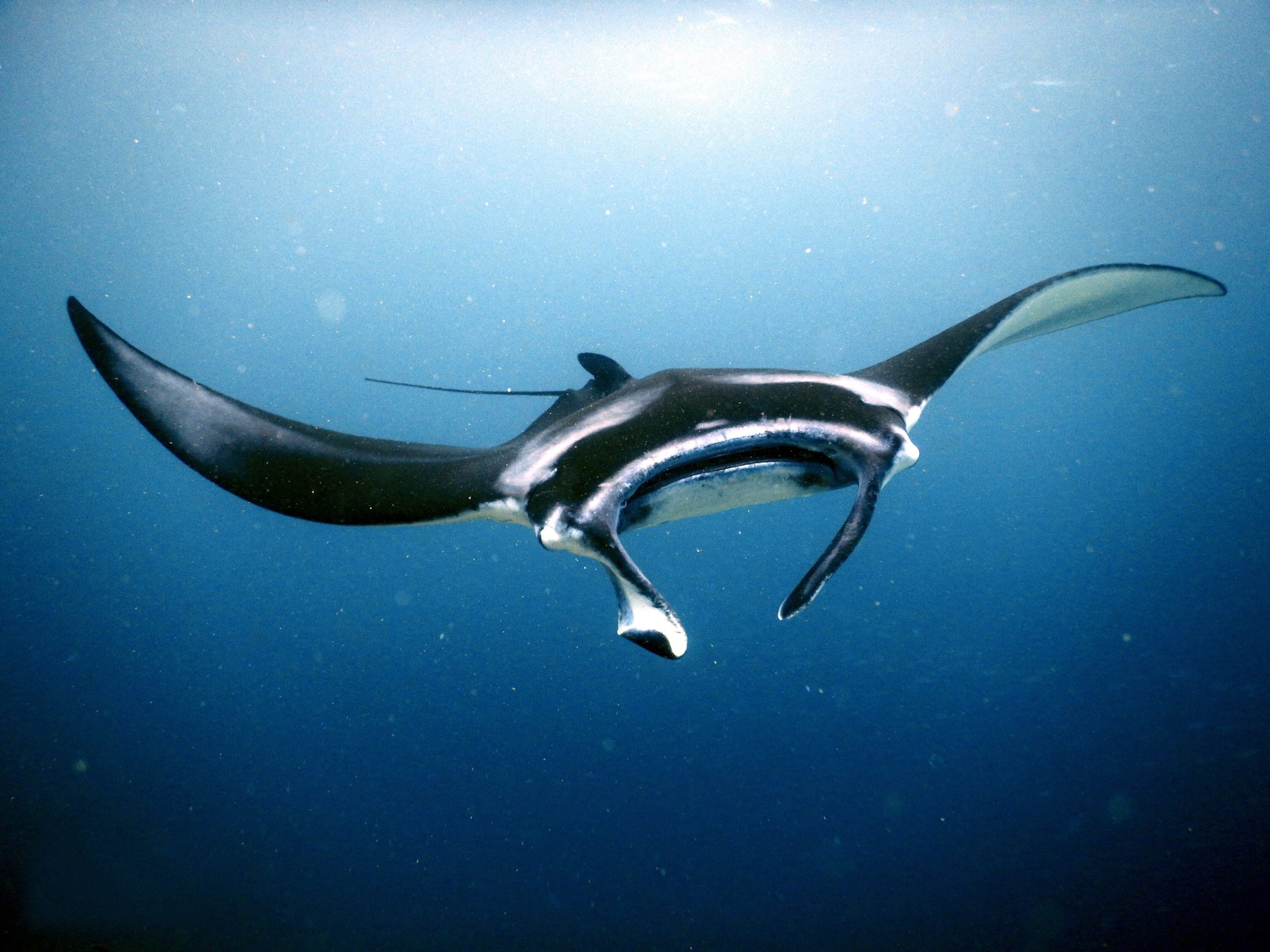
A manta ray swims happily in the waters of Indonesia. Mantas became a protected species in Indonesia in 2014, and manta hunting has declined by over 70% in some areas as a result.

El-laugh-ents: Serengeti National Park, Tanzania. Despite widespread poaching across Africa, the iconic Serengeti remains a stronghold for elephant populations thanks to income from tourism and strong monitoring and enforcement.
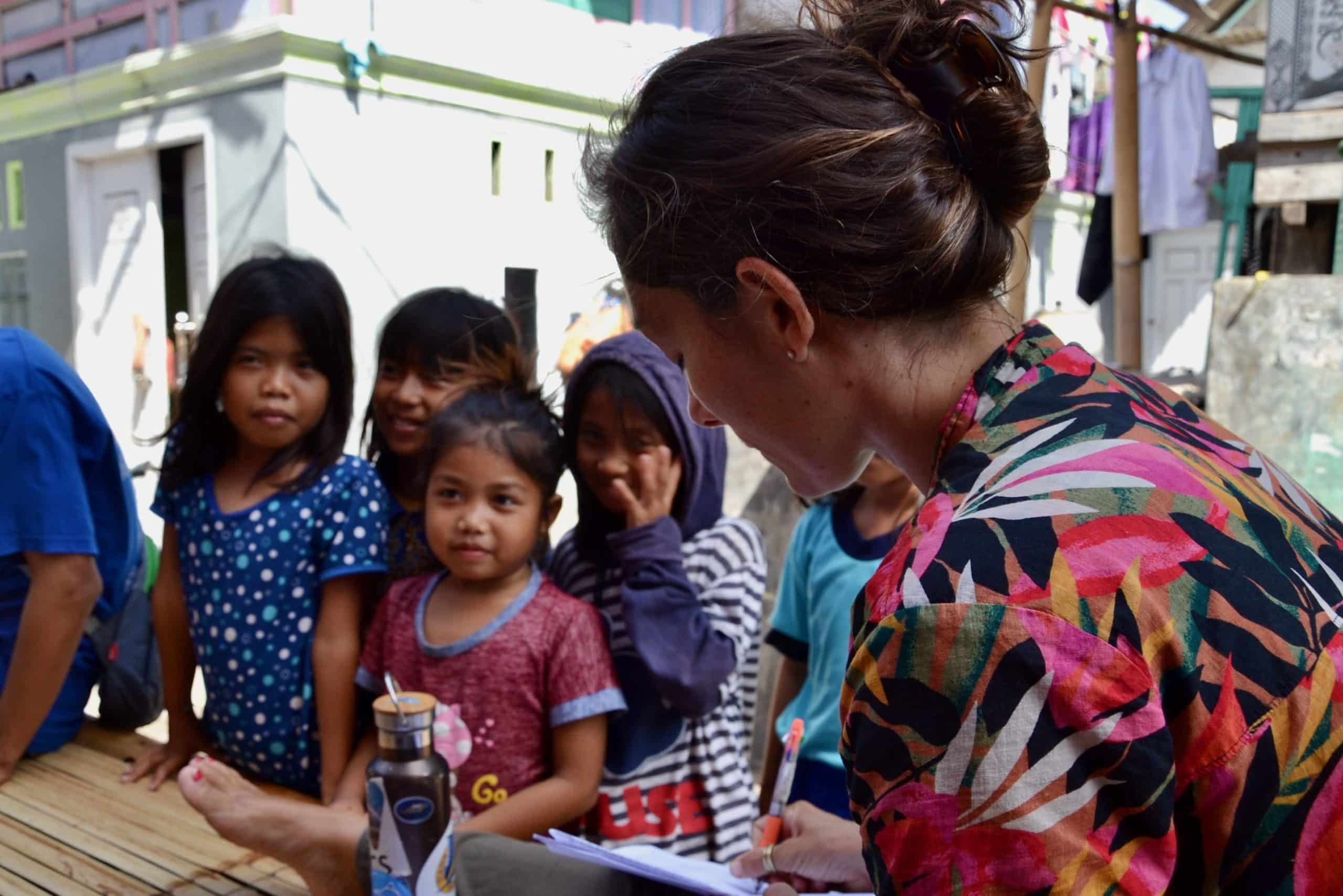
Inspiring the next generation. People protect what they love, if we can inspire children to love nature, they will grow up to cherish it, and can be quite influential in persuading their parents to do the same!
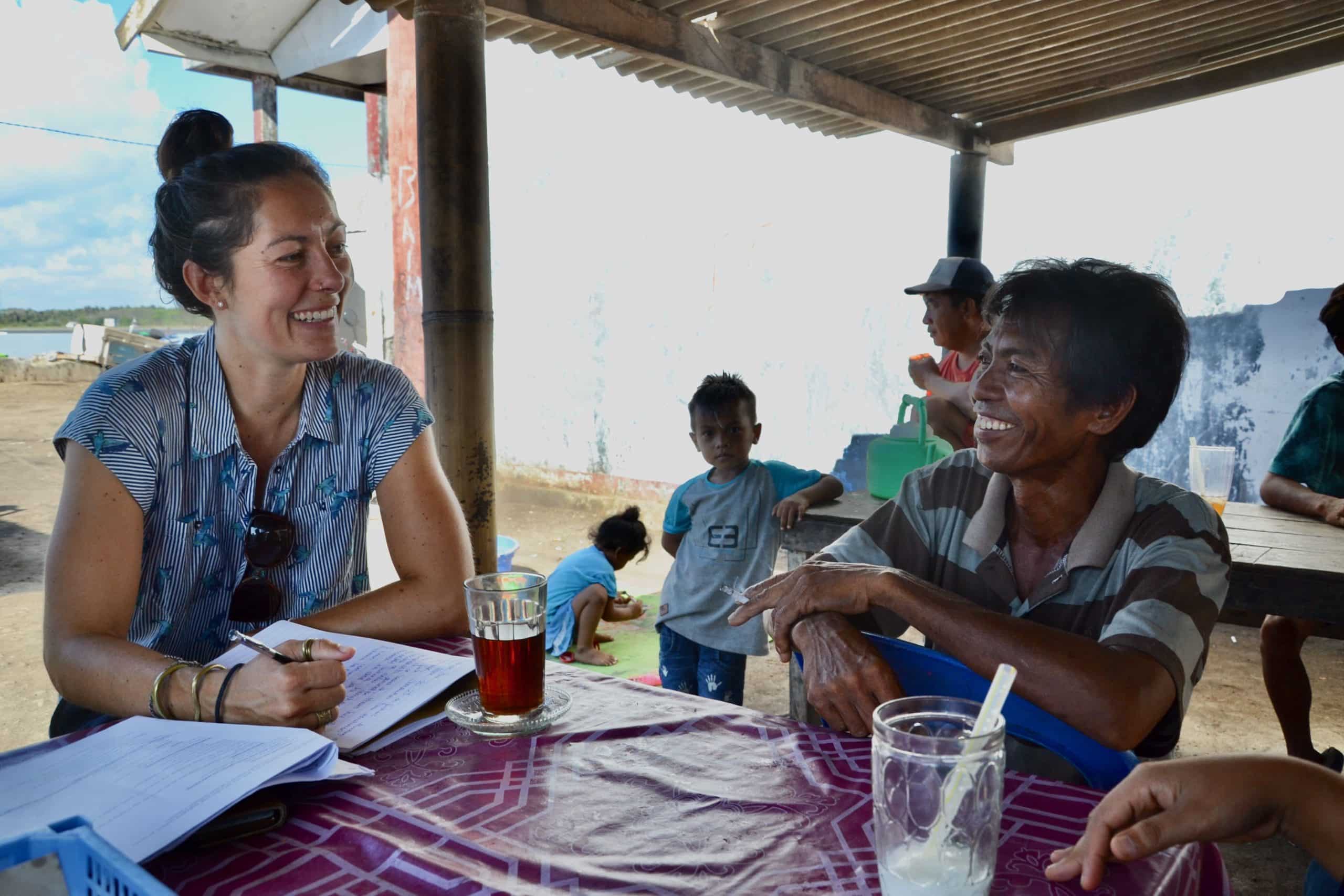
Listening and learning. Conservation is all about understanding and changing human behaviour. Here I interview a shark fisher in Indonesia, who explains why he catches sharks for a living. We must understand and unite diverse perspectives for effective and ethical conservation.

“We are far more united and have far more in common with each other than things that divide us.” One of my greatest sources for optimism are some of the incredible smart, passionate and committed emerging conservation leaders from around the world who I’ve had the pleasure to work with.

The faces and stories of shark fishers.
Enjoyed this virtual exhibition and would like to support us to carry on our mission? If you and your organization value the work that we do and would be interested in helping to ensure we are able to continue to put out these kinds of projects, we would be honoured to discuss partnership opportunities with you. You can also donate directly below.


















































